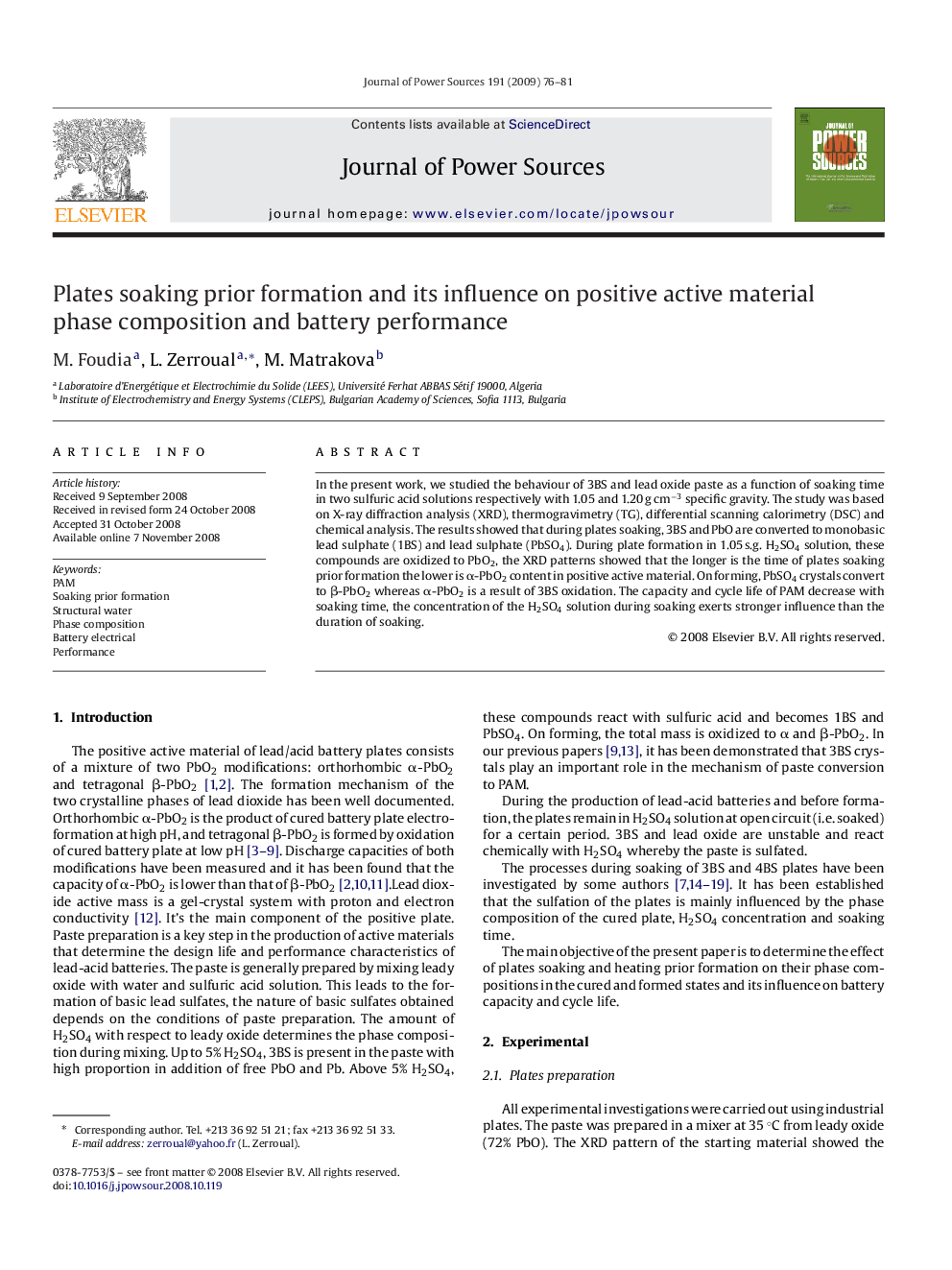| Article ID | Journal | Published Year | Pages | File Type |
|---|---|---|---|---|
| 1290684 | Journal of Power Sources | 2009 | 6 Pages |
In the present work, we studied the behaviour of 3BS and lead oxide paste as a function of soaking time in two sulfuric acid solutions respectively with 1.05 and 1.20 g cm−3 specific gravity. The study was based on X-ray diffraction analysis (XRD), thermogravimetry (TG), differential scanning calorimetry (DSC) and chemical analysis. The results showed that during plates soaking, 3BS and PbO are converted to monobasic lead sulphate (1BS) and lead sulphate (PbSO4). During plate formation in 1.05 s.g. H2SO4 solution, these compounds are oxidized to PbO2, the XRD patterns showed that the longer is the time of plates soaking prior formation the lower is α-PbO2 content in positive active material. On forming, PbSO4 crystals convert to β-PbO2 whereas α-PbO2 is a result of 3BS oxidation. The capacity and cycle life of PAM decrease with soaking time, the concentration of the H2SO4 solution during soaking exerts stronger influence than the duration of soaking.
